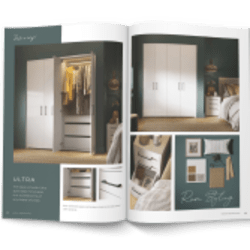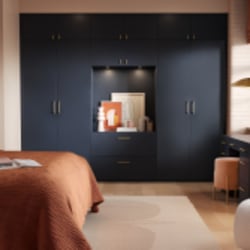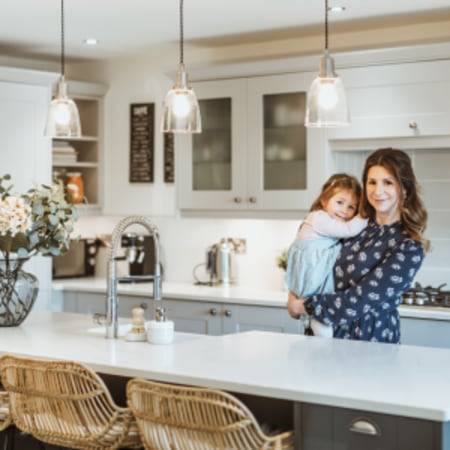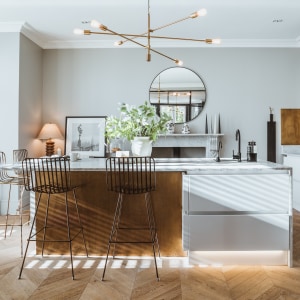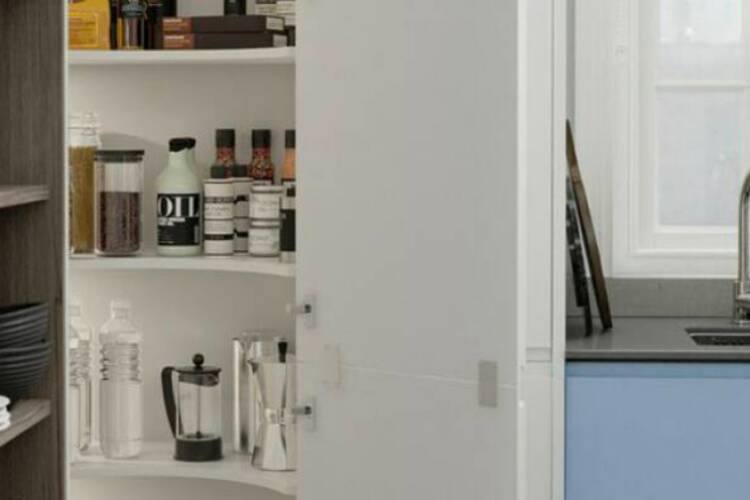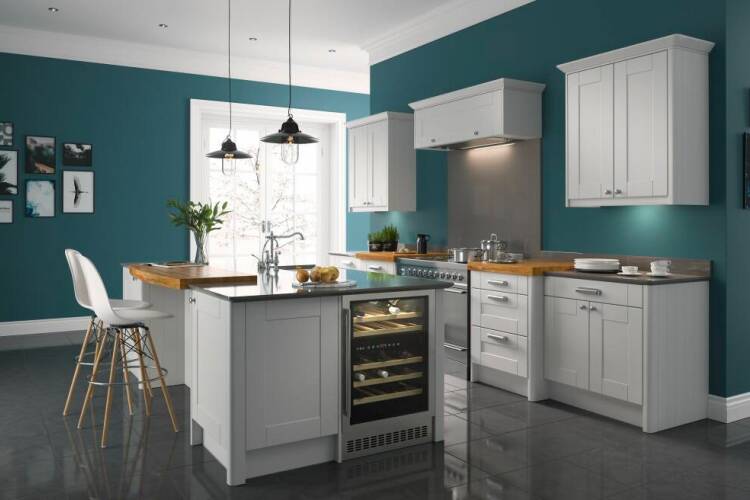How to add a kitchen larder to your room
storage ideas
A kitchen larder can be a real space-saver in a kitchen of any size. Their rise to fame started in the Victorian period, and in more recent years, they have found themselves back in fashion in contemporary kitchens.
In this guide, we'll explore the different ways to incorporate a larder into your kitchen, with tips to help you choose the best larder layout for your lifestyle, and a design that will suit your kitchen style.
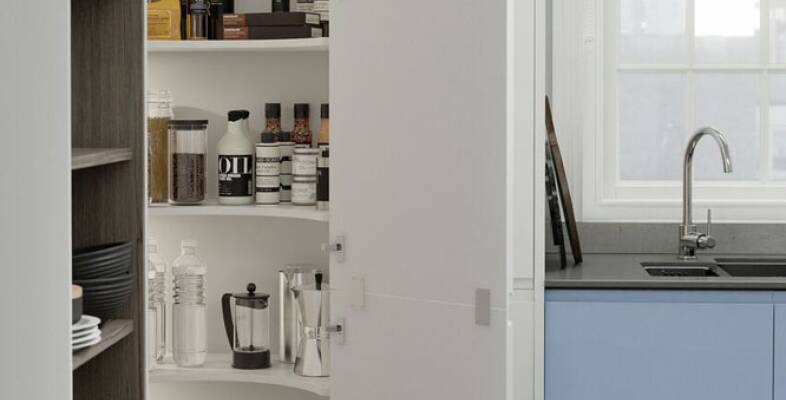
What is a larder?
Traditionally, a kitchen larder is a cool area where food can be stored at lower temperatures. The term ‘larder’ comes from their original usage to store raw meat, which was covered in lard to preserve it. Nowadays, larder storage can house milk, butter, bread, pastry, cooked meats, and any other type of food you’d like to stow away.
What is the difference between a pantry and a larder?
Whereas a kitchen larder is a cooler area that can be used to store food that only lasts in cold temperatures; a pantry can store food, and other provisions such as tablecloths, cutlery, and dishes.
Size and space of kitchen larders
A traditional larder was typically a large free-standing unit or small room within the kitchen. Larders of this style are a fantastic choice for those who both have a large kitchen and prefer traditional design. If there's not already a separate larder space in your kitchen, one option you'll be looking at is a standalone unit.
The free-standing larder units usually offer storage in the form of shelving and drawers hidden behind a set of double doors. Kitchen larder rooms, in comparison, are typically made up of shelving set from the floor to the ceiling of the room, offering space for huge amounts of ingredients and appliances.
If you don’t have enough space for a freestanding kitchen larder – or if you prefer modern design over traditional – there are contemporary solutions.
Pull-out larder storage blends into the overall design, and at first glance, appear to be a normal cupboard. Once opened, the larder slides out to reveal its contents, offering far more storage space than a standard cupboard or drawer can offer.
These are available in almost any size or height, with floor-to-ceiling larders being popular, as well as floor-to-worktop height units.
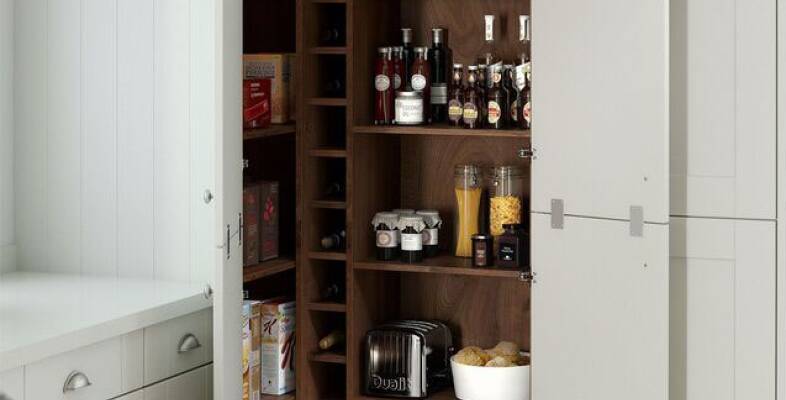
Internal structure
One of the main advantages of kitchen larders is their adaptability. The internal layout can be designed around the ways in which you'll use the units, to accommodate your items.
Consider what you plan to store in your larder. Does it include food ingredients, spices, utensils, crockery and appliances? If so, you'll need to consider what height you wish each item to be stored at, and the size of each of the products.
Heavy and cumbersome pieces should be kept towards the bottom of the larder, such as food mixers, pans and crockery. Then, you'll want to create an area for frequently used products such as spices, tinned and boxed food.
Finally, less frequently used products, such as baking supplies, could be kept towards the top – accessible, but out of the way.
You should also always consider the amount of space you'll need between each shelf.
Modern kitchen larders can even include dedicated shelves for specific products. For example, would a dedicated spice rack work best for you? If so, see if you can include a shelf dedicated to holding herbs.
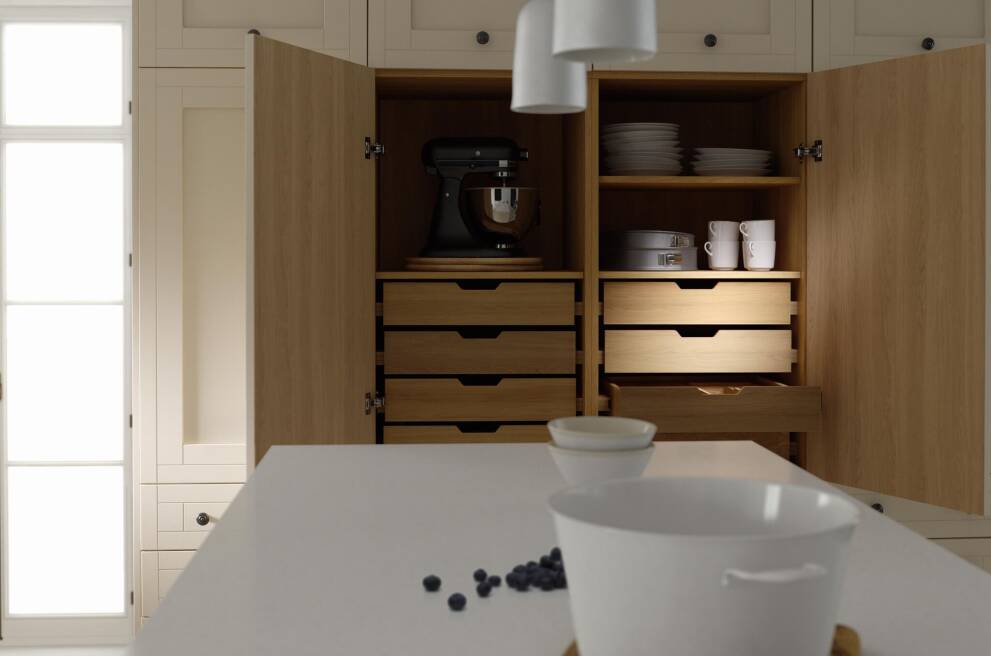
Design and colour scheme
Once you've decided on the type of larder unit you'll have and a size to suit your kitchen, all you need to do is consider how it will fit in with your overall design.
You can choose to have it blend in, which will mean choosing the same material for the door in the same colour, with the same handle as the rest of the kitchen. This is particularly flattering for modern or gloss kitchens, as the design typically aims to be sleek and minimalist.
Traditional or rustic kitchens will benefit from a wooden larder. Oak and walnut are striking natural choices, while shades of cream also look good. The Shaker design works well with this style, or a flat finish in a soft, muted tone will make a beautiful addition.
Glass panes can be easily included on a section of the kitchen larder, which will display some of the products and utensils stored.
Alternatively, you can make your larder a focal point in the room by choosing a statement colour. Aubergine often looks striking, while drawing room green or country sage green makes a subtle but stunning choice against a cream backdrop.
As far as kitchen door handles are concerned, cup or bow handles are very fitting. For something more modern (and sometimes more practical), a handlebar makes a great choice and you can install either two short handles or a singular long one.
Larder storage units are the perfect addition to practically every kitchen. With a little bit of planning, a larder can transform your kitchen – as well as your cooking process. To see how you can incorporate a kitchen larder in your home, book an appointment to visit your nearest Wren showroom, or try our online kitchen planner.







